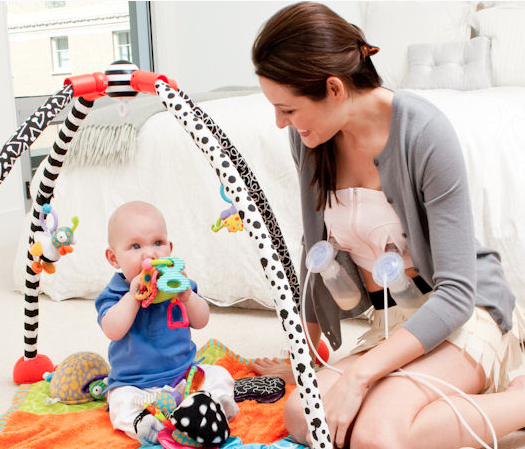Breastfeeding is considered taboo for some women of color, and one Facebook group is trying to change that.breastfeeding in order to encourage women of color to embrace nursing their babies.It's not dirty, nor shameful and should only be done in a way that reflects mommy and baby's comfort levels,” the organization says in its “About” section. However, breastfeeding can be especially stigmatized in the black community.

source
Rauslyn told People that the shoot is important to help raise awareness of the importance of breastfeeding for women of color. “It is important to show black women breastfeeding because our community needs it,” she said. “We need the support and we need our children to be healthy as well.”
The amount of calories a nursing mother needs depends on her own physiology, her level of exercise and whether her infant is breastfeeding exclusively or not. If you need help determining how much you should be eating while nursing your baby, talk to a doctor or dietician about your concerns.

source
A woman who is breastfeeding and wants to lose weight may opt to increase her level of exercise instead of or in addition to cutting calories. A 20- to 40-minute daily walk with your baby can burn up to 200 calories, according to physician Dr. Jay Gordon. In fact, a 2007 review in the " Cochrane Database of Systematic Reviews" found that a combination of exercise and cutting calories was more effective for losing postpartum weight than either method alone, and that combining exercise and moderate calorie reduction did not seem to adversely affect breastfeeding performance.

source
Once baby arrives, moms are typically encouraged to start breastfeeding right away. But how will you and baby know what to do? Will he instinctively understand how to latch on? Will your milk let down? Luckily, experts at the hospital can help you both get off to a good start. Keep these important breastfeeding tips for newborns in mind
Breastfeed right after birth
Breastfeeding within the first hour of birth, or as soon as possible, is key to setting you and baby up for future success, says Susan D. Crowe, MD, an ob-gyn and clinical associate professor at Stanford University School of Medicine. In fact, allowing moms and babies to have skin-to-skin contact right after delivery encourages newborns to start breastfeeding in the first 30 to 60 minutes. “That early initiation for breastfeeding is extremely important when it comes to sending signals to the brain and body to produce breast milk,” Crowe says. At the start, your body produces only a small amount of colostrum (the yellowish breast milk produced before normal lactation begins), which is all a newborn initially needs. But eventually you produce more breast milk as baby breastfeeds.
.jpg)
source
If your nipples are sore and cracked, a purified lanolin nipple cream or nursing ointment can help them stay moist. After a nursing session, you can also express a few drops of breast milk and, with clean hands, gently rub the milk onto your nipples.Pumping can help draw out the nipple, making it thinner and easier for baby to latch onto. It’s also a good way to help maintain your milk supply until baby has an easier time feeding. A lactation specialist can help you choose an effective pump that’s right for you.
.jpg)
source
Keeping your baby with you after the birth will promote a feeling of closeness and a strong hormonal response that is linked with breastfeeding success. In many cases it is even possible to have your baby with you immediately after a caesarean birth.
Because your new baby is still learning to breastfeed they can become confused if they are offered a teat or dummy. If your baby has fluids other than breast milk they will breastfeed less and your breast milk supply will decrease. Frequent, unrestricted suckling at the breast will satisfy your baby and ensure that your milk supply continues to meets your baby’s needs.Breastfeeding: Getting started gives you tips on how to establish good breastfeeding practices in the days after your baby is born and beyond.Make sure baby is getting an extra-wide latch to help ensure he’s getting some of the areola as well as the nipple. Tease baby’s mouth open by pushing the nipple against his upper lip, encouraging him to lift his head up and back and open wide.

source
Before going back to work, you may want to practice pumping once a day or every other day, Crowe says, since getting a preview of that experience will help you get comfortable using your breast pump.Before you breastfeed in public, practice at home. Figure out how to hold baby without a pillow and how to dress for easy access. “Practice pulling your shirt and bra down and giving baby access to the breast at home in front of a mirror to gain a bit more confidence,” Hawkins says.